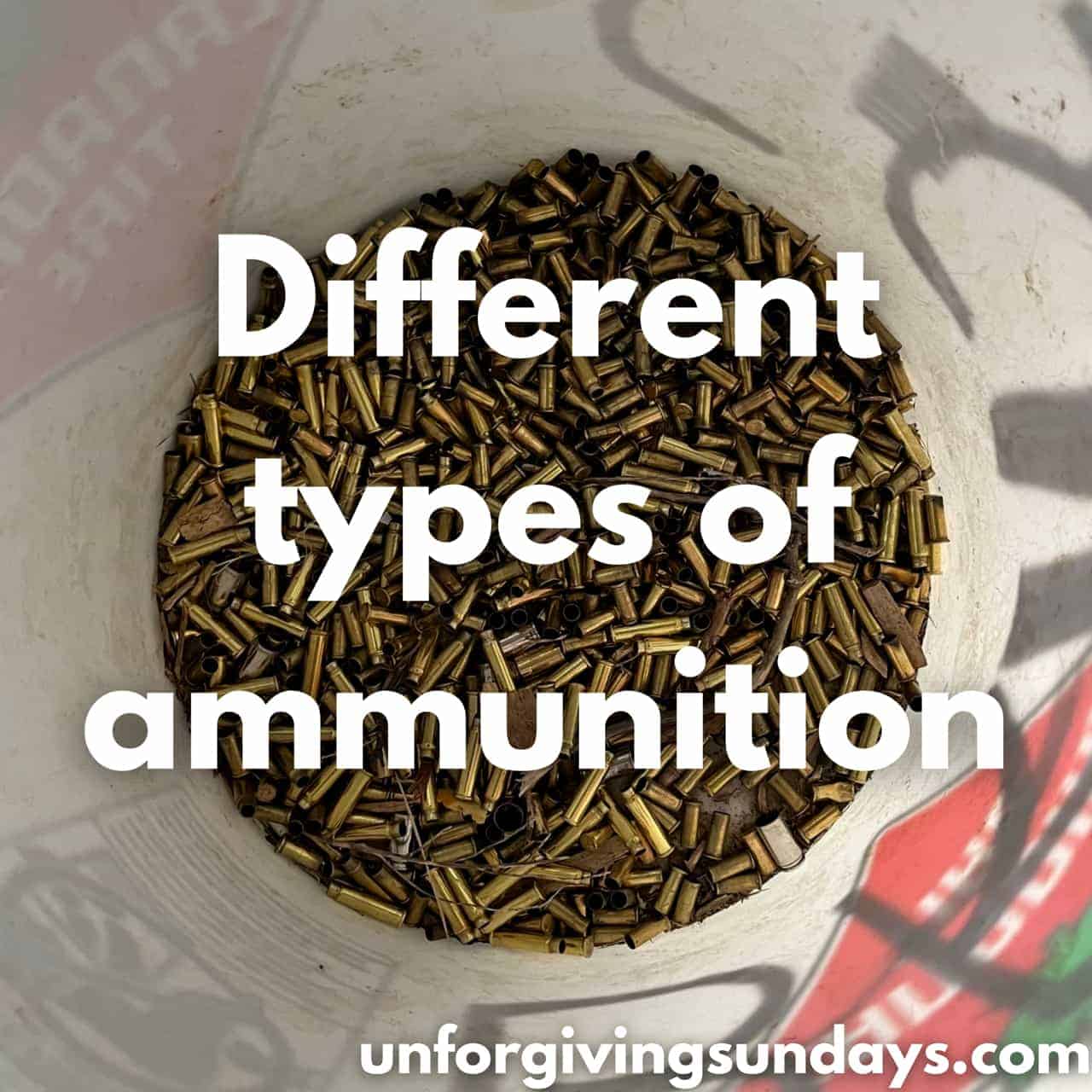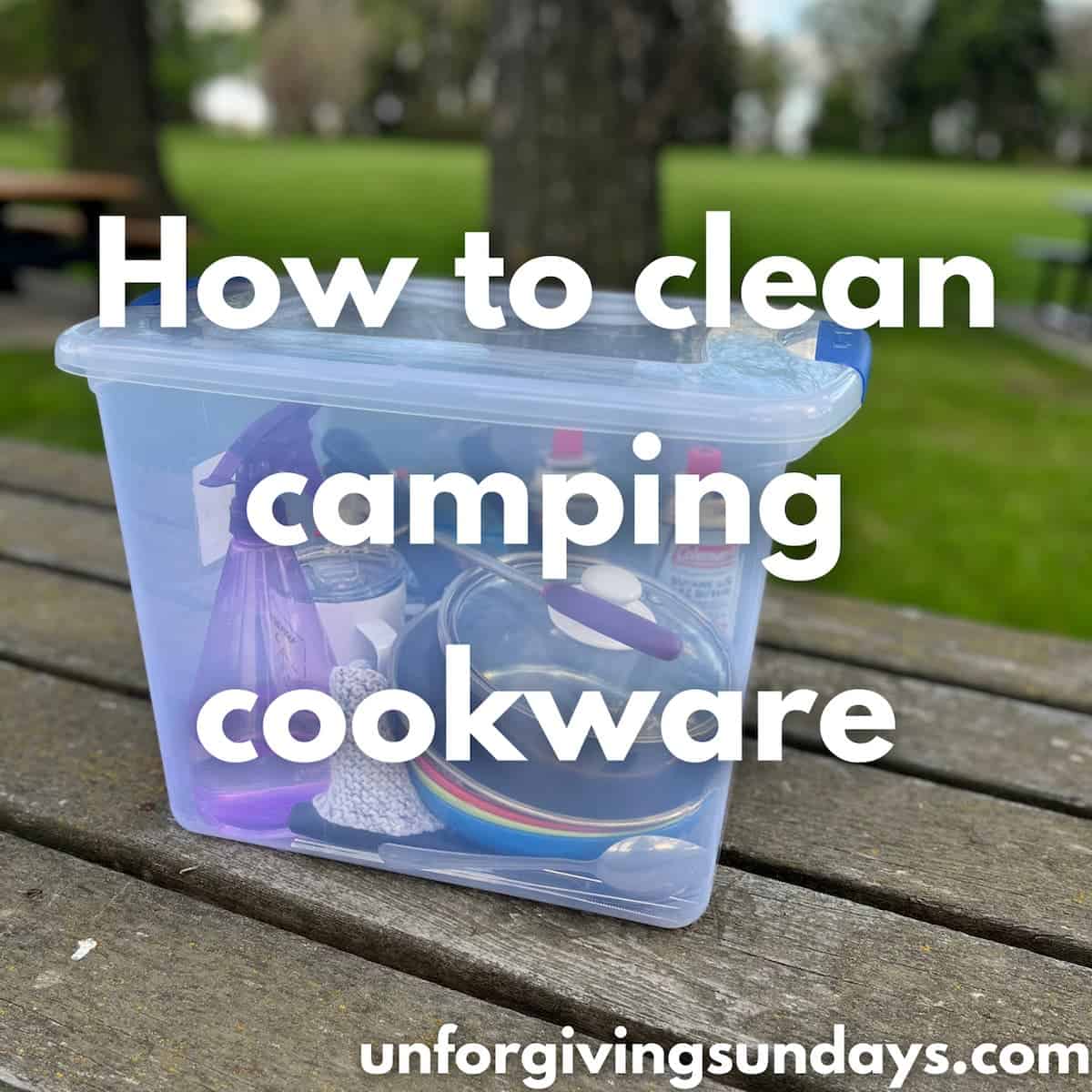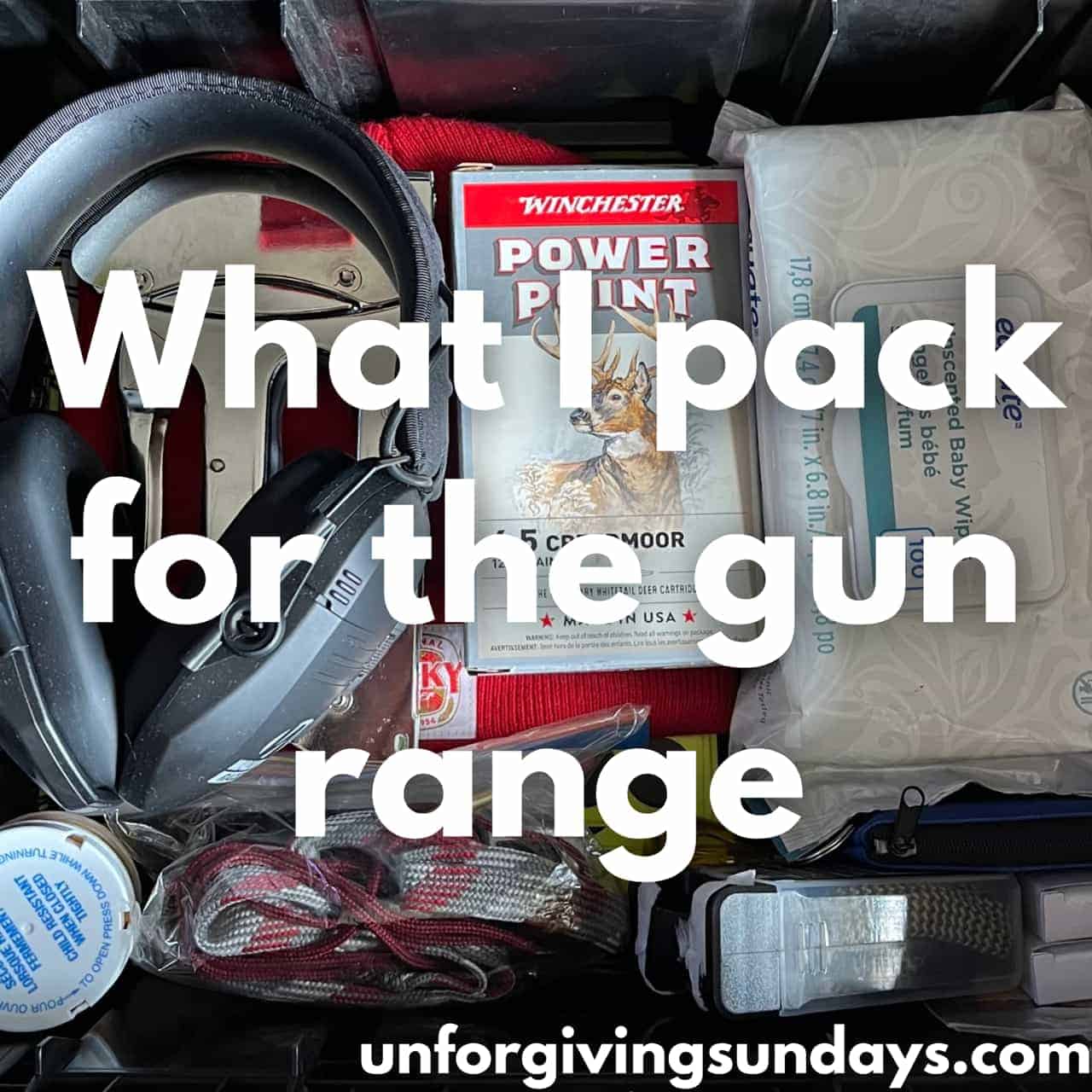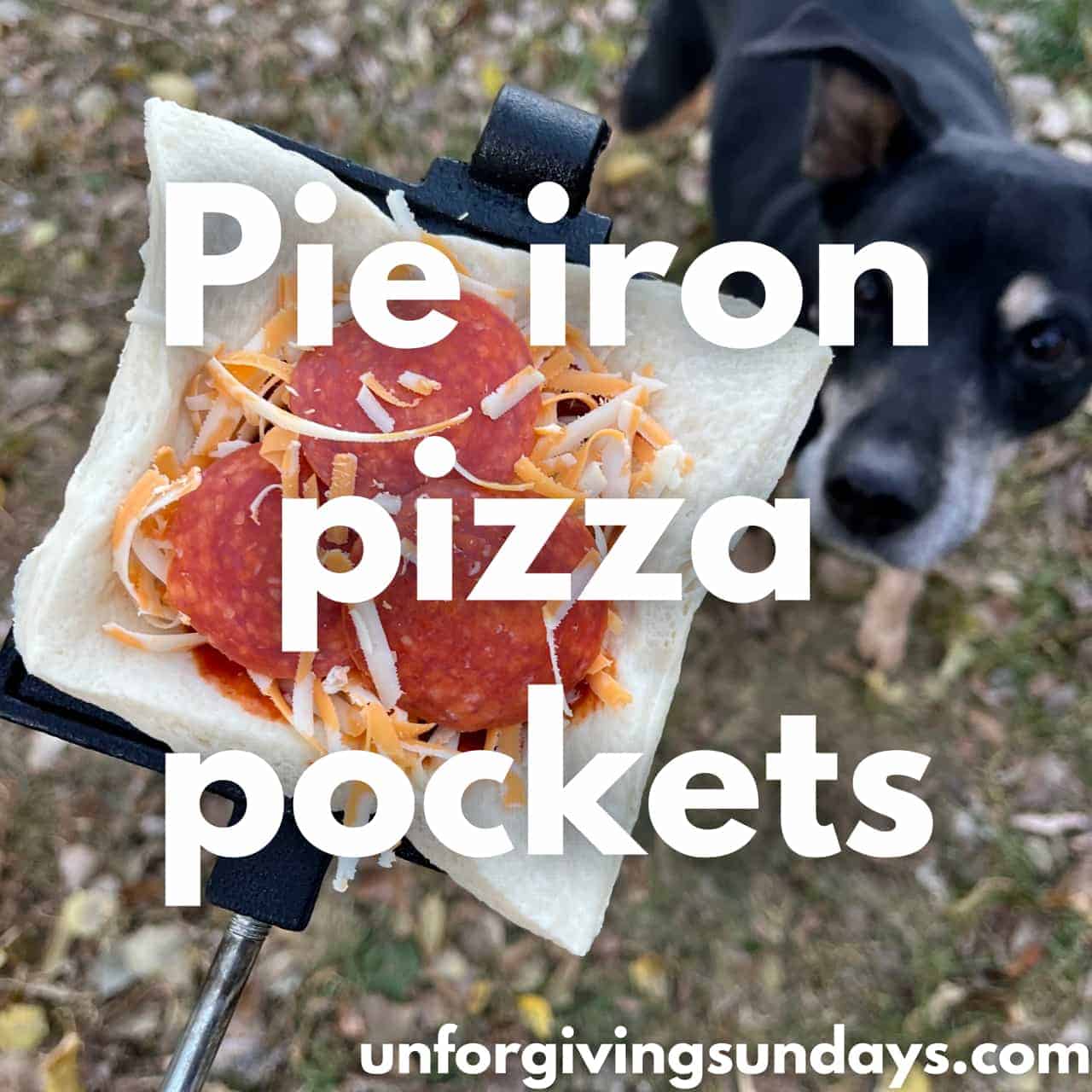If you don’t have a lot of background knowledge about firearms, the terminology can feel intimidating. What the heck is a full metal jacket? Well, you’re about to find out because this article is all about demystifying common types of firearm ammunition.

Introduction to ammunition
What is ammunition?
Ammunition (or “ammo”) refers to the projectiles that are shot out of weapons. This can include things like bombs or blow darts, but people are typically referring to firearm ammunition: cartridges and shells.
What are cartridges? What are shells?
- Cartridges are ammunition for a rifle (or handgun)
- Shells are ammunition for a shotgun.
* Sometimes “cartridge” is used to refer to any type of firearm ammunition.
What are calibers? What are gauges?
- “Caliber” refers to the size of the rifle — specifically the bore diameter. The appropriate cartridge will be of the same caliber.
- “Gauge” refers to the size of the shotgun. Both the gauge and the length of the shell are important when selecting the right ammunition for a shotgun.
Rifle cartridges explained
A cartridge is made up of four components:
- Primer
- Powder
- Bullet
- Case
The firing pin strikes the primer and it creates a reaction that ignites the powder. When ignited, the powder propels the bullet out. The bullet is the projectile that exits the gun. The primer, powder, and bullet are held together in a case. The empty case is ejected as the pullet propels forward.
There are two types of cartridges: rim-fire and centre-fire. This refers to where the primer is located — rim-fire cartridges have the primer in the rim, centre-fire cartridges have the primer in the centre. Centre-fire cartridges have more power than rim-fire cartridges.
Rifles are sized by caliber, which refers to the bore diameter (i.e., the diameter of the hole that the bullet comes out of). The larger the caliber, the larger the bore diameter.
Rifle ammunition can be the same caliber but wrapped in different casing — in which case, the ammunition would not be compatible. For example, .303 Savage and .303 British cartridges are not the same. The head stamp (i.e., the information stamped on the end of the cartridge where the primer is located) tells you the caliber, the manufacturer, and any other information you might need to determine whether you’re looking at the right ammunition for your particular rifle. The barrel of your gun will have a data stamp that indicates which cartridge to use.

What are the different bullet types?
There are many different types of bullets — here is a couple examples that demonstrate how bullets can vary:
Full metal jacket: These bullets have a soft core and are encased in hard metal (a full metal jacket, if you will). This helps with feeding, penetration, and keeping the bullet together until impact.
Hollow point: This bullet has a hole at the top which increases expansion which reduces the chance of the bullet making it all the way through the target. Hollow point bullets can be jacketed, semi-jacketed, or not jacketed at all.
Soft point: Soft point bullets are jacketed and have a soft tip, which is intended to make a larger impact hole. However, these are not as reliable (when compared to hollow point) when it comes to stopping power.
Round nose: This bullet has less expansion than hollow point and soft point bullets, but has more penetration than an flat nose bullet.
Flat nose: Flat nose bullets have a flat tip. This makes these bullets less aerodynamic while giving it more stopping power. These are often referred to as “wadcutters”. Wadcutters are good for target practice because they punch clean holes in the target.
Boat tail: Boat tail bullets have a tapered base. This reduces air resistance and improves accuracy, making it ideal for long-range shooting and competition.

Types of specialty bullets
There are also various types of specialty bullets. Here are some examples:
Tracer bullets: Typically used by the military, these bullets have a pyrotechnic charge in the base that allows the shooter to see the bullet’s trajectory.
Armour-piercing bullets: These bullets are made with a steel core and do serious damage with their intense penetration. Armour-piercing bullets are also called “steel core bullets” or “green tip ammunition” (as the tip is often painted green).
Frangible bullets: Frangible bullets disintegrate on impact to reduce the risk of ricochet. These bullets are best for training and close-quarter combat.
What does “bullet grain” mean?
Bullet grain refers to the weight of the bullet. The higher the grain, the heavier the bullet. The weight of the bullet impacts its ballistics (i.e., how your bullet travels, impact effect, etc.).
Shotgun shells explained
A shell is made up of five components:
- Primer
- Powder
- Wad
- Shot/slug
- Hull
The firing pin strikes the primer (centre-fire) and it creates a reaction that ignites the powder. When ignited, the powder propels the shot/slug out. The shot (multiple pellets) or slug (one large projectile) is what exits the gun. The wad is a tiny barrier that separates the powder from the shot, which prevents the ignited powder from damaging the shot. The primer, powder, wad, and shot/slug are held together in a hull. The empty hull is ejected when the shot/slug is propelled forward.

Shotguns are sized by gauge, which is much less intuitive than caliber. The gauge is how many lead balls with the same diameter as the bore weigh one pound. If it takes 12 lead balls that are the same diameter as the bore to equal one pound, then you are looking at a 12-gauge shotgun. If it takes 20 lead balls that are the same diameter as the bore to equal one pound, then you are looking at a 20-gauge shotgun. A 20-gauge shotgun has a smaller bore diameter than a 12-gauge because it takes more lead balls to equal one pound, and so the lead balls must be smaller because the total weight is staying the same (one pound). Confusingly, the lead balls are just part of the measurement system (we are determining the bore diameter) and have nothing to do with the actual number of projectiles per shell. TL/DR: The higher the gauge, the lower the bore diameter.
Once you’ve identified which gauge you need, you need to figure out the length of shell. The length of a shell is measured from a fired hull (which is lengthier than a shell that hasn’t been fired). This is really important because if you put a shell in that is the wrong size, the barrel of the gun can burst.
You can find the shell’s gauge by looking at the head stamp. The length of the shell will be written on the side of the hull. These should match to the data stamp on your shotgun barrel.
What are the different types of shot?
Rifles fire “bullets” and shotguns fire “shot”.
One shotgun can shoot different types of shot, as long as the shell is the appropriate size for the shotgun. Shot can be broken down into three categories:
- Birdshot — small pellets for bird hunting and small game
- Buckshot — larger pellets for larger game
- Slugs — one large projectile for big game
The amount of shot in a shell ranges from ~600 (very small) to 8 (large).


Shells vs. cartridges — pros and cons
Pros of shotgun shells:
- The ability to use shells with different loads allows the firearm to be useful for a wide range of uses.
- The spread pattern makes it more likely that you’ll reach your target at close range and require less precision.
- There is less chance of the shot passing through an object, which means there is less risk of unintended damage.
Cons of shotgun shells:
- Shells have a limited range and poor accuracy over long distances.
- Shells are more awkward to carry around.
Pros of rifle cartridges:
- Cartridges are effective at long ranges and are designed for precision shooting.
- More penetration and power.
Cons of rifle cartridges:
- There are many calibers, which gives you a lot options for hunting different-sized game. However, a rifle will only shoot cartridges of a specific caliber.
- Over-penetration makes unintended damage more likely.
Why is it important to know about different types of ammunition?
It is important to know about ammunition because it will impact the type of firearm you need. First, you need to identify your purpose (e.g., moose hunting) and then you will pick a type of ammunition that is appropriate. The types of ammunition you’ll use will determine which firearm you’ll select.
Knowing how to identify different types of ammunition will ensure that you are using the correct ammunition for your firearm. This is vital because using the wrong ammunition can lead to serious injuries. Unsure? The best person to talk to is your local arms dealer or gunsmith.
Do you still have questions about firearm ammunition? Shoot ’em my way (pun intended) and I’d love to answer them in the comments!




Leave a Reply